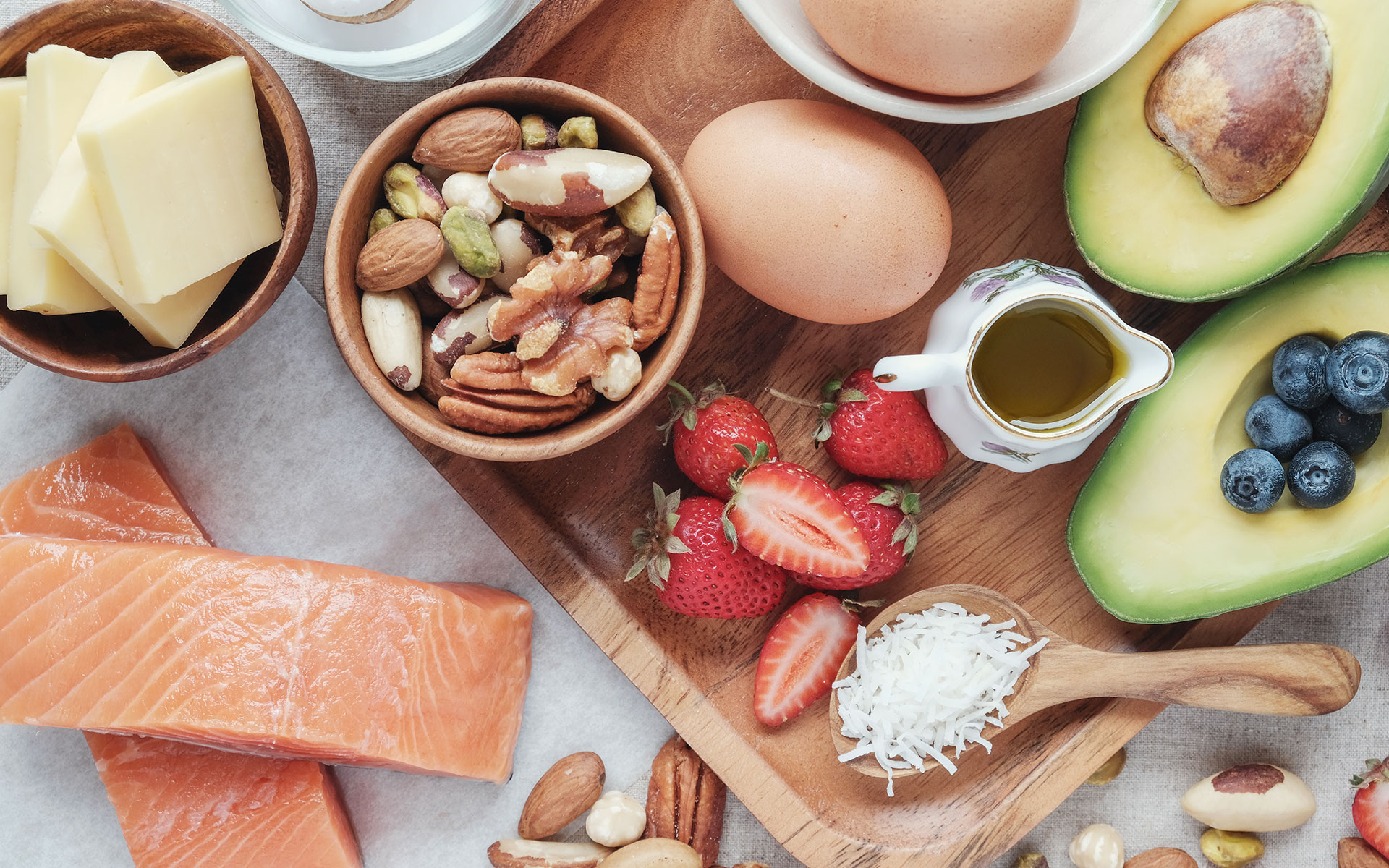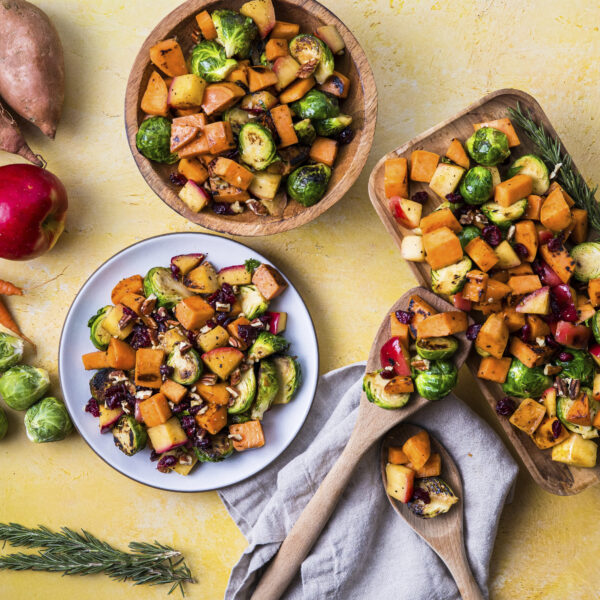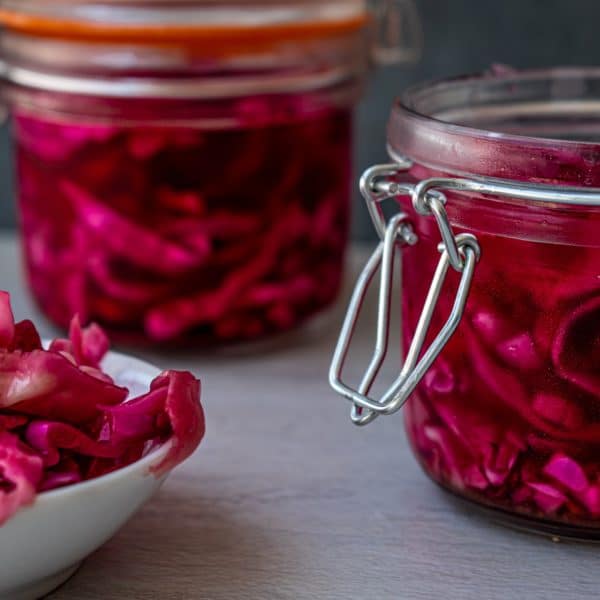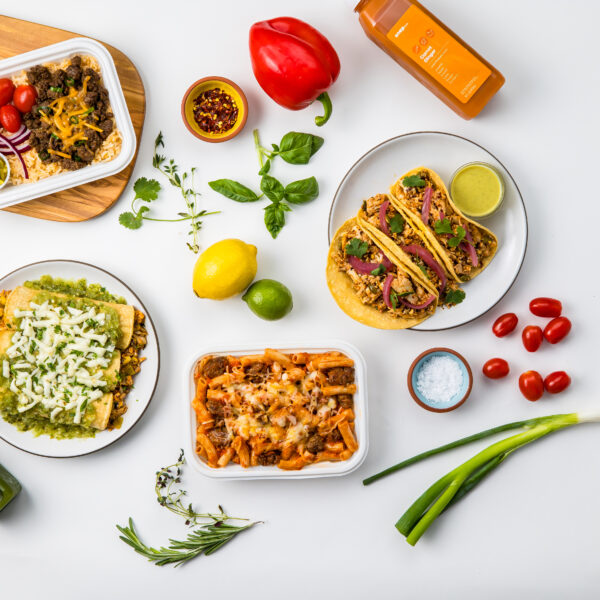Low carb diets have seen a spike in popularity in recent years, in part because of their ability to help people lose weight quickly. However, low carb diets are home to a host of other health benefits, including reduced appetite, increased high-density lipoprotein (HDL) cholesterol, reduced blood sugar and insulin level, and lowered blood pressure. To follow a low carb diet, simply limit your carb intake to around 50–100 grams per day, with the exact number depends on your weight and health history.
Here at Snap, we have more than 30 low carb menu items. We define low carb as 30g of carbs or less per meal. Use our low carb filter to see all the deliciousness that we’re serving up. And if you’re looking for keto meals instead, we’ve got those too (including a handy filter!). Some of our most popular low carb meals include: Peach BBQ Brisket with Loaded Cauliflower, Buffalo Ranch Burger with Loaded Roasted Cauliflower, Stir-Fry Chicken & Broccoli with Garlic Sauce, Cobb Salad with Blackened Chicken, and White Chicken Chili. With options like this, and new ones rotating in every 6 weeks, you’ll never get bored on your low carb journey.
Why isn’t everyone low carb?
With all these benefits, you may be asking yourself, “Why isn’t everyone low carb?” But low carb diets aren’t for everyone! If you are pregnant, suffering from adrenal fatigue, or if you have a digestive disorder, you may want to avoid following a low carb diet in the long term. Carbs are essential to the development of a fetus, assist in the function of the thyroid gland, and an absence of carbs can actually alter the diversity of the good bacteria present in the digestive tract. This is more of an issue with a keto diet than a low carb diet, but it’s worth noting!
If you are interested in diving into the world of low carb eating, it’s vital that your diet is well-rounded in whole, nutritious foods.
Reducing carbs often means eating fewer calories, it’s helpful to fill your plate with plenty of veggies, healthy fats, and protein to ensure you’re eating enough. Below, you’ll find a comprehensive list of low carb foods in every category, as well as high-carb foods to avoid. And to help you create healthy and delicious meals, we’ve also provided free printables of what to buy at the grocery store.
The Ultimate Round-Up Of Low Carb Foods
To help you transition into a low carb diet with ease, we’ve rounded up the ultimate list of low carb foods separated by category. It’s important to note that portion size and cooking methods may impact these numbers. In addition, many of these foods are high in fiber which may decrease the net carb amount — or the number of carbs absorbed by the body — even further.

Low Carb Veggies
- Asparagus – Carbs: 3 grams per cup
- Broccoli – Carbs: 6 grams per cup
- Cauliflower – Carbs: 5 grams per cup
- Cucumber – Carbs: 4 grams per cup
- Eggplant – Carbs: 5 grams per cup
- Mushrooms – Carbs: 3 grams per cup
- Radishes – Carbs: 4 grams per cup
- Tomatoes – Carbs: 7 grams per cup
- Zucchini – Carbs: 4 grams per cup

Leafy Greens
- Arugula – Carbs: 0.8 grams per cup
- Cabbage – Carbs: 5 grams per cup
- Kale – Carbs: 7 grams per cup
- Lettuce – Carbs: 2 grams per cup
- Spinach – Carbs: 4 grams per cup

Fruits
- Avocado – Carbs: 13 grams per cup
- Blackberries – Carbs: 6 grams per cup
- Olives – Carbs: 16 grams per cup
- Raspberries – Carbs: 15 grams per cup
- Strawberries – Carbs: 11 grams per cup
- Blueberries – Carbs: 21 grams per cup

Low Carb Meat (note: all natural forms of meat and seafood will be low carb!)
- Beef – Carbs: 0 grams per oz
- Chicken – Carbs: 0 grams per oz
- Lamb – Carbs: 0 grams per oz
- Pork – Carbs: 0 grams per oz

Seafood
- Salmon – Carbs: 0 grams per oz
- Sardines – Carbs: 0 grams per oz
- Shellfish – Carbs: 2–4 grams per oz
- Trout – Carbs: 0 grams per oz
Healthy Fats and Oils Carbs
- Avocado Oil – Carbs: 0 grams per tablespoon
- Coconut Oil – Carbs: 0 grams per tablespoon
- Extra Virgin Olive Oil – Carbs: 0 grams per tablespoon
- MCT Oil – Carbs: 0 grams per tablespoon

How many Carbs are in Dairy?
- Butter/Ghee – Carbs: 0 grams per oz
- Cheeses – Carbs: 0–1.5 grams per oz
- Eggs – Carbs: 0 grams per egg
- Full-Fat Yogurt – Carbs: 6 grams per cup
- Heavy Cream – Carbs: 8 grams per cup

Nuts and Seeds
- Almonds – Carbs: 6 grams per oz
- Cashews – Carbs: 9 grams per oz
- Chia Seeds – Carbs: 12 grams per oz
- Peanuts – Carbs: 5 grams per oz
- Walnuts – Carbs: 4 grams per oz

Low Carb Seasonings
- Cinnamon – Carbs: 0.7 grams per tablespoon
- Common Herbs – Carbs: 0–0.3 grams per tablespoon
- Pepper – Carbs: 0 grams per tablespoon
- Salt – Carbs: 0 grams per tablespoon
- Vinegar (White, Apple Cider) – Carbs: 0 grams per tablespoon

Drinks – (all without added sweeteners)
- Almond Milk, Unsweetened – Carbs: 0 grams per cup
- Bone Broth – Carbs: 0 grams per cup
- Coffee – Carbs: 0 grams per cup
- Tea – Carbs: 0 grams per cup
- Water – Carbs: 0 grams per cup
What Not To Eat On A Low Carb Diet
While some foods like chips, candy, and other sugar-filled snacks are a no-brainer to steer clear of on a low carb diet, you might be surprised to learn that some healthy items made the list as well. Generally, anything high in starches like potatoes, grains, and bananas are high in carbohydrates. Sweet (and artificially sweetened) foods also top the list. And while some of these foods can be eaten in moderation, it’s best to eliminate them from your diet altogether if you are taking on a low carb diet to lose weight or balance out your blood sugar levels.
High-Carb Foods To Avoid:
- Bananas
- Beans
- Beer
- Bread
- Chickpeas
- Chips
- Corn
- Grains
- Juice
- Milk
- Oatmeal
- Raisins
- Sugar
- Sugary Drinks
Low Carb Weekly Sample Menu
Low carb foods cover a variety of categories, making it easy to whip together a meal in no time. And while not all of these foods require a recipe to enjoy, we put together a sample list of meals for breakfast, lunch, dinner, and snacks so you can stay full and focused all week long (and even longer with leftovers!). We also created a downloadable grocery list so you can get everything you need to create these meals at home!
Monday
Breakfast: Scrambled eggs with mushrooms and tomatoes
Lunch: Sliced turkey and cheese lettuce wraps
Dinner: Beef and cheese stuffed bell peppers
Snack: DIY Nut mix
Tuesday
Breakfast: Spinach, egg, and cheese muffins
Lunch: Chicken, spinach, and berry salad with apple cider vinegar dressing
Dinner: Zoodles and meatballs topped with marinara sauce
Snack: Garlic kale chips
Wednesday
Breakfast: Omelette with spinach, bell peppers, and radishes
Lunch: Leftover turkey and cheese wraps and a spinach salad
Dinner: Salmon cooked in ghee with mixed vegetables
Snack: Hard-boiled eggs
Thursday
Breakfast: Leftover spinach, egg, and cheese muffins
Lunch: Buddha bowl with mixed veggies, kale, turkey, and avocado
Dinner: Leftover zoodles and meatballs
Snack: String cheese
Friday
Breakfast: Chia seed pudding (made with unsweetened almond milk) topped with coconut flakes
Lunch: Taco salad with beef, lettuce, cheese, tomatoes, and avocados
Dinner: Turkey-stuffed mushrooms with brussels sprouts
Snack: DIY Nut mix
Saturday
Breakfast: Smoothie with coconut milk, berries, and protein powder
Lunch: Avocado tuna salad
Dinner: Cheesy chicken and broccoli with cauliflower rice
Snack: Carrots and ranch
Sunday
Breakfast: Bacon and eggs
Lunch: Zucchini, tuna, and avocado roll-ups
Dinner: Leftover chicken, broccoli, and cauliflower rice stir fry
Snack: Veggies and guacamole
Going low carb doesn’t have to be complicated. By focusing on filling your plate with a variety of healthy, low carb and high protein food, you can easily improve your health while keeping your stomach (and wallet!) happy.
If you don’t have time to cook every day, or want someone else to do the planning for you, we offer a variety of low carb meal options to keep things delicious AND easy!
Sources: Healthline | Medical News Today








Leave a Reply
28 Comments
This info is very easy to understand & will help me avoid high carb foods. I will ck out Sam’s blog. I love Snap Kitchen & they are my “go-to” place for take out food.
[…] These printable food lists and shopping lists will make things easy! Simply print, keep them on your fridge, or take them with you to the grocery store. […]
Low Carb, High Health!
I am looking forward to printing out this list. It is just what I am looking for.
Thank You for this valuable inside to a better lifestyle !
You are very welcome, Karen!
Thanks for having this info available this will makes meals easier to plan .
Happy to help!
I have CHF, COPD, my Dr. just told me I’m border line diabetic, cut down on carbs, plus I’m on a very low sodium restriction. So any food suggestions in these categories for me ?
Hi Karan,
Always run any diet changes by your doctor, but the low carb meal plan and the low carb food list at the bottom of the blog post may be helpful for you. A low carb diet is great for managing blood sugar. You can always modify recipes to reduce the salt, too! Hope this helps!
Thank you for this guidance!
You’re so welcome, Kay! Glad it was helpful.
Where can I get a list of low carb meals for breakfast lunch and dinner please
Hi Richard,
There’s a sample meal plan at the bottom of the blog post. Hope it helps!
Reviewing information
Hopefully it’s helpful for you!
Thank you for this list that is free. I’m poor and cannot afford to buy these diet plans that are expensive. You have helped my health and I am grateful.
We’re so glad it was helpful!
Where is the “printable” list?
Linda,
If you click the blue button above the weekly sample menu, it will take you to a downloadable PDF that you can print or save to your computer.
Love this web site
Thanks so much, Linda!
Hey sam its amanda Can you send me a list of foods i cant eat and i can eat on a low carb diet and also a good meal plan for me and also a good website for me to look up everything if u don’t mind i really need help. Thanks amanda
Hi Amanda,
You can find a meal plan and a downloadable low carb food list at the bottom of the blog post. Hope that helps!
Would like some meal plans low carb
Hi Theresa,
There is a sample meal plan at the bottom of the blog post.
How do I get a print friendly version
Hi there,
Just click the button above the sample menu that says ‘Download the ultimate low-carb food list’ and you’ll find it there!